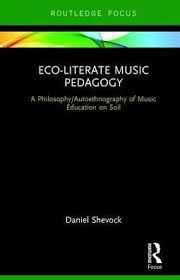 Winter sunset, walking in the woods. The crunching of dry snow underfoot, a woodpecker beating out a rhythm on a dead tree. Wind gusts high in the trees and then dies down. The dog snorts and digs under some dry leaves, then snaps a twig in his mouth. A cardinal calls to his mate, the song heard over the creaking of two trees in the wind. None of these sounds uses an instrument, notation, or conductor, but that doesn’t mean they’re not music.
Winter sunset, walking in the woods. The crunching of dry snow underfoot, a woodpecker beating out a rhythm on a dead tree. Wind gusts high in the trees and then dies down. The dog snorts and digs under some dry leaves, then snaps a twig in his mouth. A cardinal calls to his mate, the song heard over the creaking of two trees in the wind. None of these sounds uses an instrument, notation, or conductor, but that doesn’t mean they’re not music.
Daniel Shevock, instructor in music at Penn State Altoona and an avid hiker, is very much aware of that music in nature and its importance in our lives. While working on his PhD at University Park, he took a course taught by Madhu Prakash, professor of education, on the “ecological literacy interdisciplinary movement in education,” Shevock says. After all, “the educational process is eco-literacy. In every moment spent in schools, and in every subject, we learn an attitude toward the natural environment cultivating ecological citizens or yahoos.”
What exactly is eco-literacy? Being aware of our environmental issues. For teachers, then, it means first improving their own eco-literacy and then using that knowledge to gear lesson plans to teach students about the ecological challenges that they face. Shevock acknowledges there might be resistance to the idea but he knows it’s important for people to “take their heads out the sand to open themselves up to concerns they previously didn’t recognize.” In his effort to encourage fellow educators, he has written Eco-Literate Music Pedagogy (Routledge, 2018), which serves as a guide for educators to apply eco-literacy to their own teaching.
Music classes may not seem like the place to discuss the environment but Shevock points out that music and the environment have long been linked. “From a classical music perspective, the inspirations of the environment presupposes a conception of the natural environment,” he says.
Noting that music composers have always used nature as both model and stimulus, Shevock rattles off names, such as the twentieth-century French composer Olivier Messiaen, who collected and notated bird songs as inspiration for his own work. R. Murray Schafer, a composer and educator, created a World Soundscape Project to work on the concept of acoustic ecology. Emily Doolittle, a modern composer from Canada, is very interested in music and sounds in nature, especially birds. Anthony Seeger, an ethnomusicologist, studies the music of the Suyá Indians of northern Mato Grosso, Brazil, “and their conception of animals as having their own music,” Shevock says. The Suyá believe “humans don’t have their own music, they just use animal music.”
Shevock taught instrumental and general music in the Pittsburgh public schools for eleven years and served as the emerging musical artist in residence in jazz at Penn State Altoona in 2015. In addition to teaching he maintains a website dedicated to eco-literate music pedagogy, which includes “Songs for Eco-Literacy,” a list of songs that could start conversations on the subject, as well as videos and articles. Shevock acknowledges the hurdles facing educators interested in eco-literacy. “There’s a lot of weight there. It’s easier to put your head in the sand and only teach what we’re used to. But we can’t. Reality exists.”
—Therese Boyd, ’79

